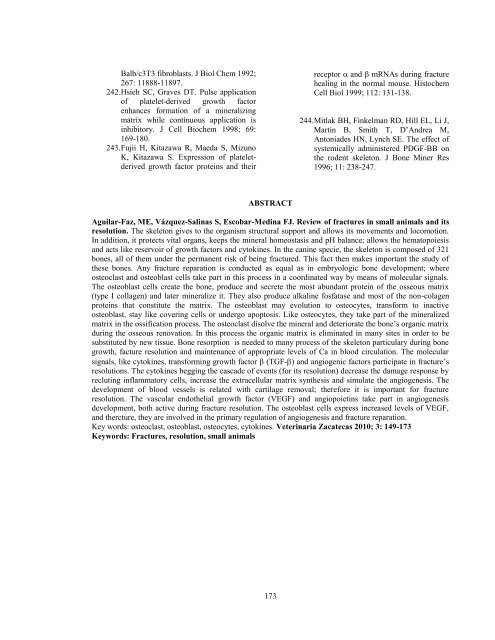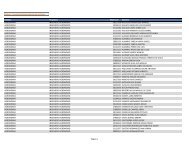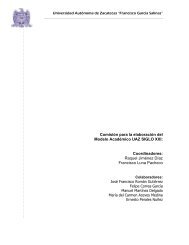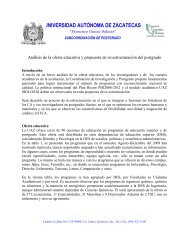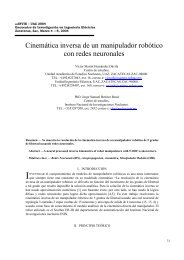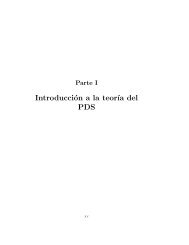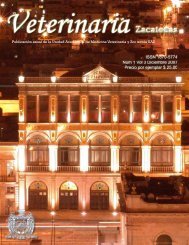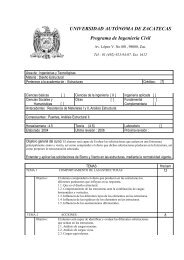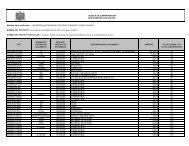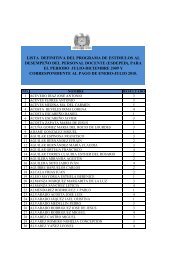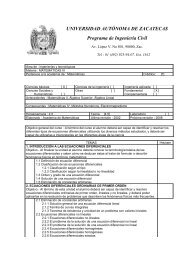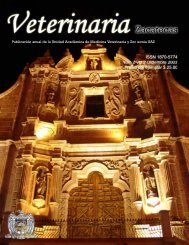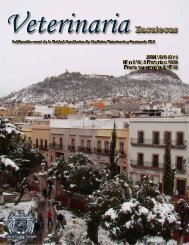Revista Veterinaria Zacatecas 2010 - Universidad Autónoma de ...
Revista Veterinaria Zacatecas 2010 - Universidad Autónoma de ...
Revista Veterinaria Zacatecas 2010 - Universidad Autónoma de ...
Create successful ePaper yourself
Turn your PDF publications into a flip-book with our unique Google optimized e-Paper software.
Balb/c3T3 fibroblasts. J Biol Chem 1992;<br />
267: 11888-11897.<br />
242. Hsieh SC, Graves DT. Pulse application<br />
of platelet-<strong>de</strong>rived growth factor<br />
enhances formation of a mineralizing<br />
matrix while continuous application is<br />
inhibitory. J Cell Biochem 1998; 69:<br />
169-180.<br />
243. Fujii H, Kitazawa R, Maeda S, Mizuno<br />
K, Kitazawa S. Expression of platelet<strong>de</strong>rived<br />
growth factor proteins and their<br />
receptor and mRNAs during fracture<br />
healing in the normal mouse. Histochem<br />
Cell Biol 1999; 112: 131-138.<br />
244. Mitlak BH, Finkelman RD, Hill EL, Li J,<br />
Martin B, Smith T, D’Andrea M,<br />
Antonia<strong>de</strong>s HN, Lynch SE. The effect of<br />
systemically administered PDGF-BB on<br />
the ro<strong>de</strong>nt skeleton. J Bone Miner Res<br />
1996; 11: 238-247.<br />
ABSTRACT<br />
Aguilar-Faz, ME, Vázquez-Salinas S, Escobar-Medina FJ. Review of fractures in small animals and its<br />
resolution. The skeleton gives to the organism structural support and allows its movements and locomotion.<br />
In addition, it protects vital organs, keeps the mineral homeostasis and pH balance; allows the hematopoiesis<br />
and acts like reservoir of growth factors and cytokines. In the canine specie, the skeleton is composed of 321<br />
bones, all of them un<strong>de</strong>r the permanent risk of being fractured. This fact then makes important the study of<br />
these bones. Any fracture reparation is conducted as equal as in embryologic bone <strong>de</strong>velopment; where<br />
osteoclast and osteoblast cells take part in this process in a coordinated way by means of molecular signals.<br />
The osteoblast cells create the bone, produce and secrete the most abundant protein of the osseous matrix<br />
(type I collagen) and later mineralize it. They also produce alkaline fosfatase and most of the non-colagen<br />
proteins that constitute the matrix. The osteoblast may evolution to osteocytes, transform to inactive<br />
osteoblast, stay like covering cells or un<strong>de</strong>rgo apoptosis. Like osteocytes, they take part of the mineralized<br />
matrix in the ossification process. The osteoclast disolve the mineral and <strong>de</strong>teriorate the bone’s organic matrix<br />
during the osseous renovation. In this process the organic matrix is eliminated in many sites in or<strong>de</strong>r to be<br />
substituted by new tissue. Bone resorption is nee<strong>de</strong>d to many process of the skeleton particulary during bone<br />
growth, facture resolution and maintenance of appropriate levels of Ca in blood circulation. The molecular<br />
signals, like cytokines, transforming growth factor (TGF-) and angiogenic factors participate in fracture’s<br />
resolutions. The cytokines begging the casca<strong>de</strong> of events (for its resolution) <strong>de</strong>crease the damage response by<br />
recluting inflammatory cells, increase the extracellular matrix synthesis and simulate the angiogenesis. The<br />
<strong>de</strong>velopment of blood vessels is related with cartilage removal; therefore it is important for fracture<br />
resolution. The vascular endothelial growth factor (VEGF) and angiopoietins take part in angiogenesis<br />
<strong>de</strong>velopment, both active during fracture resolution. The osteoblast cells express increased levels of VEGF,<br />
and thercture, they are involved in the primary regulation of angiogenesis and fracture reparation.<br />
Key words: osteoclast, osteoblast, osteocytes, cytokines. <strong>Veterinaria</strong> <strong>Zacatecas</strong> <strong>2010</strong>; 3: 149-173<br />
Keywords: Fractures, resolution, small animals<br />
173


